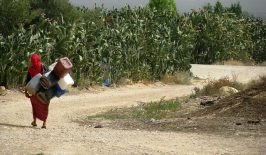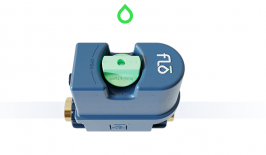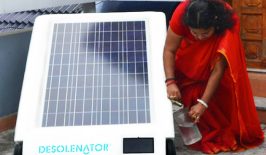According to Water Scarcity Clock, around 2.3 billion people around the globe are living in conditions of water scarcity. Many of these people live in drier or more arid regions, but even the world’s wetter climes are also starting to face water stress. Furthermore, a global rise in temperature, resulting in drought conditions in many regions, has resulted in an increase in water demand – especially in Europe which last year experienced unprecedented heatwaves.
Although agriculture is responsible for much of this water use, domestic households and tourism are also starting to put more stress on reservoirs and water basins, in particular in the Mediterranean. Currently, the EU treats and reuses only about 2.4 precent of treated urban wastewater effluents, while a 2018 report suggests this number should be much higher.
State-level water recycling is likely to be the key to solving this problem, but a new company is letting the end-consumer also get involved in doing their part to save water. The Hydraloop is an all-in-one water reclamation and recycling centre designed for homes, hotels and businesses. It aims to provide consumers with an easy and convenient way of not only recycling their household water, but also saving money in the process.
Your Own Personal Water Recycling Plant
Based out of the Water Campus – a center of water research in Leeuwarden, the Netherlands – Hydraloop creates refrigerator-sized recycling units that can reclaim household waste water from sources such as toilets, washing machines and baths and showers. The system plugs into the existing water infrastructure of a house and passes waste water through an intensive 6-stage sterilisation and decontamination process, including sedimentation, flotation, dissolved air flotation, foam fractionation and UV sterilisation. The resulting water is considered clean and safe to be used again for washing, gardening or toilet flushing.
According to Hydraloop, one system can recycle 45 to 85 percent of an average household’s water, potentially saving up to 20,000 gallons a year. In homes in countries with cooler autumns, winters and springs, Hydraloop users can also expect to save energy on heating, as the Hydraloop can also partially fill this function.
The system is also designed to be as convenient to the user as possible. Although bulky compared to many home appliances, the slim design of the Hydraloop reduces its space profile, and just one look at its sleek, clear lines suggests that a lot of thought has clearly been given to its overall look. More importantly, however, the Hydraloop is almost completely self-sufficient, requiring only minimal maintenance and no chemicals, filters or other expendable elements. It also comes packaged with an app that allows users to monitor its condition and the amount of water recycled.
Currently, Hydraloop is selling three separate versions of their system: The Hydraloop home, garden and pool. With a price tag of around 4,000 USD, the system is not exactly affordable for many households, although this initial cost would likely eventually be recouped through savings to water and potentially electricity.
Generally, however, it seems Hydraloop prime market could be commercial buildings and hotels, which often come with high water demands. The simple installation and low maintenance requirements will certainly make them attractive to cash-conscious businesses, while Hydraloop claims their products would help contribute to a LEED and BREEAM certification which denotes environmental consciousness in building design. And all of that also would also help to improve the real estate value particular property.
Hotels, especially in arid or remote regions, would perhaps benefit most, not only in terms of saving and reusing water, but also from a marketing perspective. The company claims Hydraloop can help illustrate the sustainable credentials of a resort or hotel – an issue that may only become more important to holidaymakers as the discussion regarding climate change and travel intensifies.
Currently, Hydraloop’s business has been limited to Europe, the Middle East and Africa, although it now has its sights set on the US. In fact, it has already made a splash in the States, winning the Best of Best Award at this year’s CES2020 show in Las Vegas.










